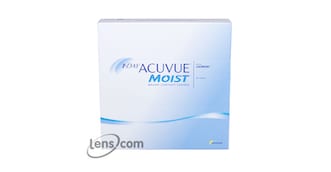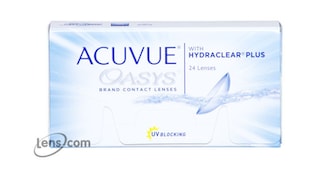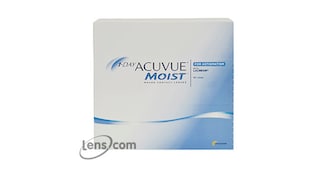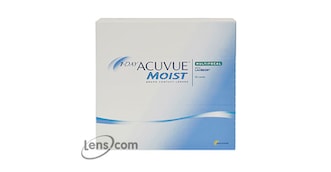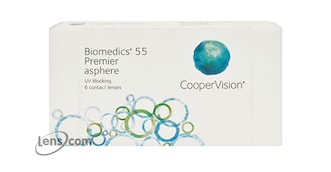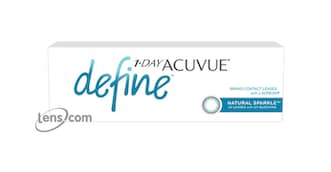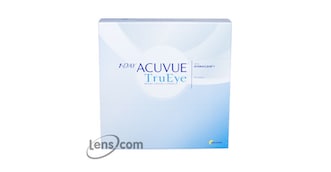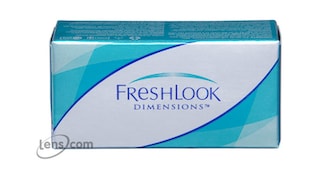UV-Blocking Contact Lenses
UV-blocking contacts are lenses that help protect your eyes from the sun’s harmful ultraviolet (UV) rays. UV-blocking contacts also function as an additional layer of protection from UV rays that may enter the eye from the top or through the sides of non-wrap-around sunglasses.
| Most Popular UV-Blocking Contact Lenses Contact Lenses | |||
|---|---|---|---|
| All UV-Blocking Contact Lenses Contact Lenses | |||
|---|---|---|---|
| UV-Blocking Contact Lenses Contact Lenses With Rebates | |||
|---|---|---|---|
See All Available UV-Blocking Contact Lenses Rebates
| Rebates for Order Amounts | |||
|---|---|---|---|
| UV-Blocking Contact Lenses Brand Products | 4 Boxes | 8 Boxes | |
| 1-Day Acuvue Define | -- | $160 | |
| 1-Day Acuvue Moist 30 Pack | $85 | -- | |
| 1-Day Acuvue Moist 90 Pack | $105 | $220 | |
| 1-Day Acuvue Moist for Astigmatism 30 Pack | $85 | -- | |
| 1-Day Acuvue Moist for Astigmatism 90 Pack | -- | $180 | |
| 1-Day Acuvue Moist Multifocal 30 Pack | $75 | -- | |
| 1-Day Acuvue Moist Multifocal 90 Pack | -- | $180 | |
| 1-Day Acuvue TruEye | -- | $180 | |
| Acuvue 2 | -- | $180 | |
| Acuvue Oasys 12 Pack | $85 | -- | |
| Acuvue Oasys 24 Pack | $85 | -- | |
| Avaira Vitality | -- | $160 | |
| Avaira Vitality Toric | -- | $160 | |
| Bausch + Lomb INFUSE One-Day | -- | $160 | |
| Biomedics Toric | $75 | -- | |
| Biotrue ONEday | -- | $160 | |
| Biotrue ONEday for Astigmatism | -- | $160 | |
| Biotrue ONEday for Presbyopia | -- | $160 | |
| Clariti 1-Day Multifocal | -- | $160 | |
| FreshLook Dimensions | -- | $160 | |
| MyDay Daily Disposable | -- | $210 | |
| ULTRA One Day | -- | -- | |
About UV-Blocking Contact Lenses Contacts
The Dangers of Prolonged Exposure to UV Radiation
UV radiation is a form of non-ionizing radiation that is emitted by natural and artificial sources. Our primary natural source of UV radiation is the sun, while artificial sources of UV radiation include fluorescent lights, tanning beds, and some types of lasers.
There are three main types of UV radiation, namely, UVA, UVB, and UVC. All of the UVC and most of the UVB radiation is absorbed by the Earth’s ozone layer. For this reason, nearly all of the UV radiation we come in contact with is UVA with a small amount of UVB.
Generally speaking, UV radiation has some helpful traits. For example, when it comes in contact with human skin, it helps us develop vitamin D, which is necessary for strong bones and optimal immune function. Vitamin D can also be useful in preventing mood swings among people who experience Seasonal Affective Disorder during months with less sunlight. In fact, winter blues are often attributed to a lack of vitamin D.
However, UV radiation also has negative effects. Prolonged exposure to direct sunlight, more specifically to the UVA and UVB rays present in sunlight, can lead to burning and blistering. Exposure to UV rays also does similar things to the eye in that it can cause photokeratitis — a temporary but painful condition that affects the clear, protective outer layer of the eye (cornea). A similar condition can occur when UV rays reflected off snow or ice hit the eye.
Previous studies have also shown that long-term UV exposure can increase an individual’s risk of developing cataracts, or the clouding of the lens of the eye. Worse, long-term UV exposure may contribute to macular degeneration and other vision-threatening conditions later in life.
Features of UV-Blocking Contact Lenses
Sunglasses help protect the eyes from much of the UV radiation that would otherwise enter the eyes, but they don’t block everything. Unless you’re wearing wrap-around sunglasses, some UV rays can still enter your eye from above and through the sides of sunglasses. This is where UV-blocking contact lenses come in.
Like standard contacts, these lenses ensure clear vision. But they have the added benefit of serving as another line of defense against UV radiation.
Below are the two main classifications of UV-blocking contacts, according to the United States Food and Drug Administration (FDA):
- Class I - Class I contacts must be able to block more than 90% UVA and 99% UVB rays. They’re recommended for high-exposure environments, such as mountains and beaches.
- Class II - Class II contacts must be able to block more than 70% UVA and 95% UVB rays. They’re recommended for general purposes.
A good rule of thumb is that UV-blocking contact lenses should be worn by people who maintain a highly active lifestyle, especially those who spend plenty of time outdoors. Even if you’re not particularly active, it’s worth considering wearing UV-blocking contacts during the summer or if you live somewhere hot.
Most UV-blocking contact lenses in the market also come with other premium features, such as high breathability and wettability. Various UV-blocking contact lenses in the Acuvue® family of contacts, for example, are equipped with exclusive HYDRACLEAR® PLUS Technology. This patented technology mixes a wetting agent into the lens formula itself so that the lens stays moist all day, thereby ensuring a comfortable lens-wearing experience.
Many UV-blocking contact lenses in the market are also made of soft lens materials (hydrogels and silicone hydrogels) that allow plenty of oxygen into the eyes to keep them white, clear, and healthy.
On top of that, UV-blocking contact lenses come in different modalities to suit different lifestyles. If you don’t enjoy the hassle of a lens care routine, opt for daily disposable UV-blocking lenses, such as 1-Day Acuvue DEFINE®, Clariti® 1-Day, and Biotrue ONEday. Otherwise, you could opt for bi-weekly or monthly UV-blocking contact lenses, such as Acuvue 2, Acuvue OASYS®, and Acuvue VITA®.
Take note that UV-blocking contact lenses are not substitutes for UV-absorbing goggles or sunglasses because they don’t cover the eye entirely. Unless stated otherwise by your eye care professional (ECP), you should continue to use UV-absorbing eyewear as directed.
Popular UV-Blocking Contact Lenses
The Acuvue brand of contact lenses tends to be reliable for UV protection in general. That's because Acuvue brand contacts are the only major brand that blocks at least 97% UVB and 81% UVA rays. If you have a highly active lifestyle or if you spend lots of time outdoors, talk to your ECP about trying Acuvue contacts with Class I UV protection, such as Johnson & Johnson’s Acuvue OASYS and 1-Day Acuvue TruEye®.
Other popular contact lens brands that offer UV protection include CooperVision’s Clariti and Avaira Vitality™, as well as Bausch + Lomb’s Biotrue ONEday. Take note that brands generally differ in terms of feel and modality, so consult your ECP to determine the best one for you.
How Much Are UV-Blocking Contact Lenses?
UV-blocking contact lenses could cost anywhere from $30 to $65 per box of six lenses. Depending on the modality of the lens, each box could last you three to six months. If you prefer the convenience of daily disposable contacts, expect to spend $50 to $80 per box of 90 lenses. Everything considered, a yearly supply of UV-blocking contacts could cost you anywhere from $240 to $640.
That being said, there is a way for you to get UV-blocking contact lenses for up to 70% cheaper than retail. By avoiding the overhead that brick-and-mortar stores have to pay and by purchasing contacts in bulk, retailers like Lens.com are able to offer UV-blocking contacts at much lower prices. You can also rest assured that the UV-blocking contacts found on Lens.com are from the same trusted brands that you’ll find in your ECP’s office or at your local stores.
Save money on UV-blocking contacts without sacrificing quality by purchasing from Lens.com.
How to Insert and Remove UV-Blocking Contacts
Most UV-blocking contacts are soft disposable lenses and as such, you should follow the standard procedure for that type of lens. Wash and dry your hands, then scoop your first lens out of the case with the index finger of your dominant hand. Rinse it with a multipurpose cleaning solution recommended by your ECP. Inspect the lens for any tears or debris. Using the middle finger of your dominant hand, pull down your lower eyelid. Stare straight ahead and gently place the lens on your eye. Blink a few times to center the lens. Repeat with the other lens.
To remove UV-blocking contacts, hold your eyelids open and gently pinch the lens between your index finger and thumb. Carefully lift the lens off of your eye. Repeat with the other lens.
About Lens.com
Lens.com has been proudly offering high-quality contact lenses at discount prices since 1995. Choose from a variety of our UV-blocking contact lenses and enjoy hassle-free returns, quick shipping, and a 100% money-back satisfaction guarantee.
